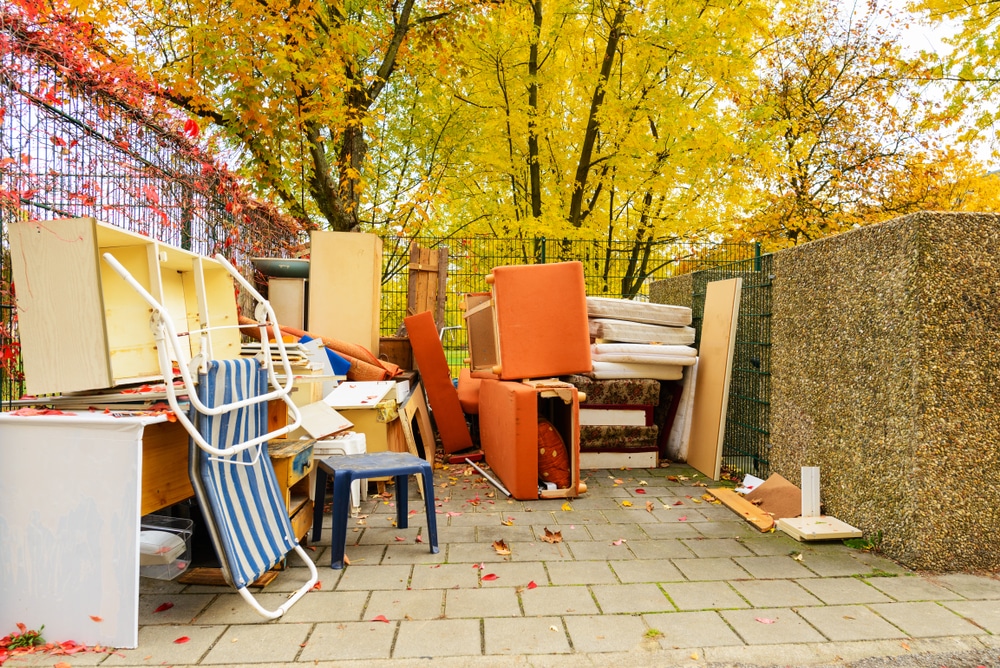Table of Contents
Homemakers desire to dispose of furniture after some years to revamp their house with the new furniture. However, the primary concern is getting rid of old furniture before buying new furniture. However, it is essential to consider both convenience and environmental impact before removing old furniture. It is advised to choose eco-friendly options for disposing of furniture that benefits others and the planet. By exploring the tips and solutions in this article, you will be equally beneficial in disposing of any furniture. Whether you have a wooden, metal, or plastic furniture style these furniture disposal methods are universal for all.
Additionally, we can also help you revamp your home furniture with the 21 Timeless Furniture Styles that will surely elevate your living experience.
Eco-Friendly Solutions to Dispose of Furniture
1. Donate to Charities or Nonprofits
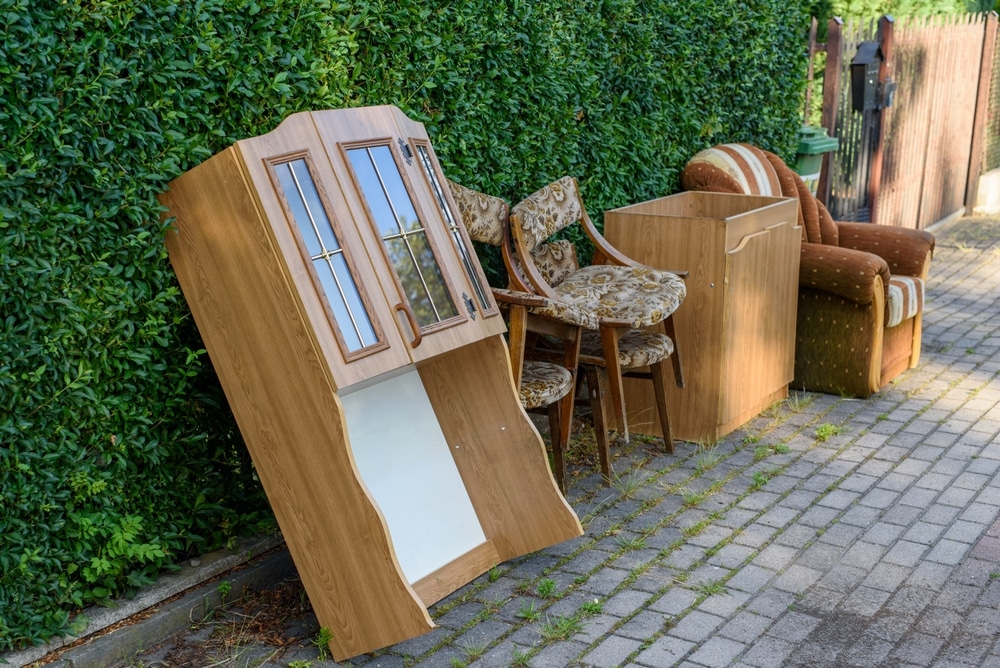
Giving gently used furniture to charitable organizations and charities is a kind act and a sustainable way to dispose of the furniture. If the furniture is in good shape, charities such as the Salvation Army frequently take in a variety of large goods, such as couches, tables, beds, and more. These products are then directly provided to families in need or sold at resale stores for a profit, extending their usable lives.
Benefits
- You can reduce waste by donating instead of dumping it, preventing useable items from ending in landfills.
- By helping people and families who could not afford the money to buy new furniture, your donation enhances their quality of life.
- Contributions to recognized charities are tax deductible in many jurisdictions, giving contributors a financial advantage.
Tips
- To maximize its usefulness, ensure the furniture is clean and in good condition before donating.
- Some charities provide pickup services for larger goods, making it easier for contributors.
2. Arrange for Curbside Pickup
Numerous towns and waste management organizations offer curbside pickup for bulk items, including used furniture. This service can be arranged by contacting local authorities, or it is usually provided on designated collection days. It’s an easy method to get rid of furniture without having to move it yourself.
Benefits
- It’s easy to manage; just set your furniture items at the curb on the designated day.
- Curbside pickup for bulky items is typically free as part of household garbage management services.
- To minimize their influence on the environment, municipalities frequently have procedures to ensure that goods are recycled or disposed of responsibly.
Tips
- Different areas may have specific rules regarding what items can be left for curbside pickup and how they should be prepared.
- Check with local authorities to see if bulk item pickups require prior notice or scheduling in some regions.
3. Sell or Give Away Online

Online marketplaces like Facebook Marketplace, Craigslist, and neighborhood applications provide a practical means of giving away or selling furniture to nearby residents. This method is ideal for items still in good condition and can be appealing to those looking for furniture for free or at a discounted price.
Benefits
- You can connect with local purchasers or recipients using online platforms with a broad reach.
- It’s a speedy way to eliminate furniture because items may be advertised, and transactions can be completed quickly.
- By encouraging reuse, giving away furniture for free promotes goodwill in your neighborhood and lowers waste.
Tips
- To draw in potential buyers, include precise measurements, descriptions, and images.
- Schedule meetings in public areas or bring a companion to safeguard your safety when meeting potential purchasers.
4. Consider Furniture Recycling Programs
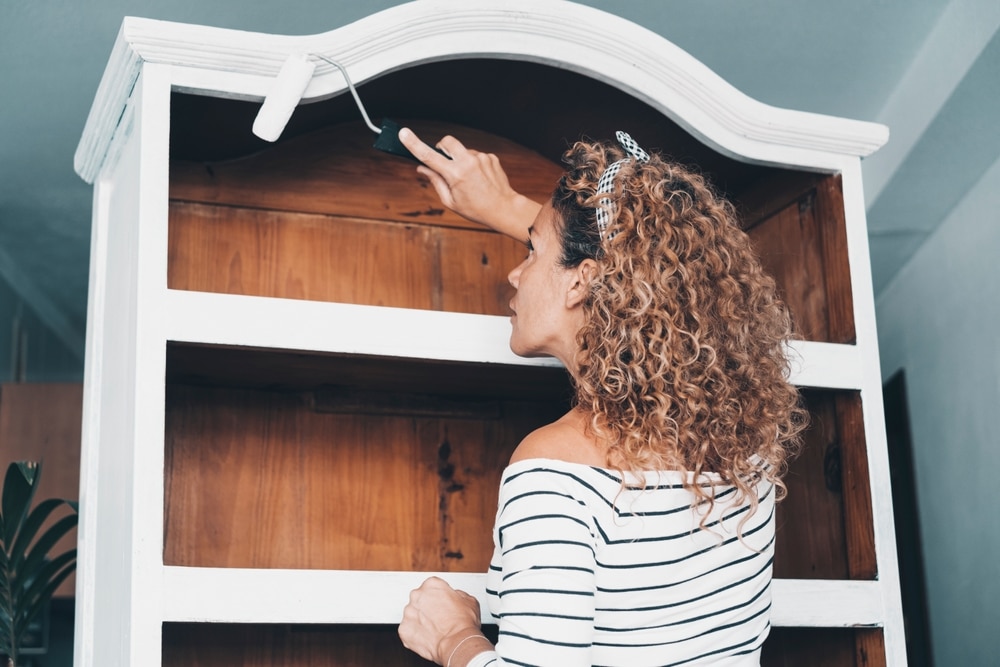
Programs for recycling used furniture aim to properly dispose of it by recycling its parts rather than disposing of them in landfills. Specialized businesses that gather, dismantle, and prepare furniture components, including fabric, metal, and wood, for recycling or reuse are frequently involved in these projects.
Benefits
- Recycling lessens the need for raw materials and the environmental damage caused by furniture manufacturing.
- Materials recovered from recycled furniture can be used to create new goods, facilitating a circular economy.
- To ensure compliance with environmental laws, many furniture recycling programs follow municipal and federal standards regulating garbage management and recycling.
Tips
- Find out whether your area offers furniture recycling services and inquire about their procedures and costs.
- Be careful of any preparation requirements, as certain programs may ask you to disassemble or prepare furniture for pickup.
5. Hire a Junk Removal Service
Junk removal companies, such as 1-800-GOT-JUNK, provide a practical way to dispose of large items like furniture. Usually, these services take care of everything from pickup to disposal, sorting goods for recycling, donation, or eco-friendly disposal.
Benefits
- Junk removal services are efficient and save you the stress of transporting heavy or bulky furniture items.
- Reputable services reduce environmental impact by giving recycling and donating preference over landfill disposal.
- They take care of sorting, loading, cleaning, and disposing of furniture, leaving your area clutter-free.
Tips
- Look into various garbage removal firms to select one that best suits your wants for services and environmental values.
- Request quotes in advance and clarify what services are included to avoid unexpected events.
6. Dumpster Rental for Renovation Projects

Renting a dumpster is recommended for the practical removal of old furniture and other debris during house renovations or clean-outs. You can choose rental companies that recycle and properly dispose of trash, even if it’s not always the most eco-friendly choice.
Benefits
- You may eliminate furniture and renovation debris with an on-site dumpster at your convenience.
- Cleaning is more effective, and clutter is reduced with a dedicated disposal location.
- Several dumpster rental businesses collaborate with recycling facilities or offer recycling services to keep recyclables out of landfills.
Tips
- To prevent overfilling or needless expenses, select a dumpster size based on the furniture and debris you need to remove.
- To ensure appropriate disposal, sort recyclables from non-recyclables.
7. Repurpose or Upcycle
Before you dispose furniture, consider whether any parts can be repurposed or upcycled into new items or incorporated into DIY projects. The creative ways to repurpose old furniture not only cuts down on waste but also lets you be creative and find new uses for old furniture.
Benefits
- Upcycling can help you be more creative by allowing you to make one-of-a-kind furniture or home decor.
- Repurposing furniture is cheaper than purchasing new products or supplies for do-it-yourself projects.
- Upcycling lowers waste generation overall and encourages sustainable living by keeping furniture out of landfills.
Tips
- Inspect furniture pieces’ materials and condition to see if they have the potential to be upcycled.
- Look through community resources, workshops, and online tutorials for ideas and direction on upcycling projects.
8. Check with Retailers for Buyback Programs
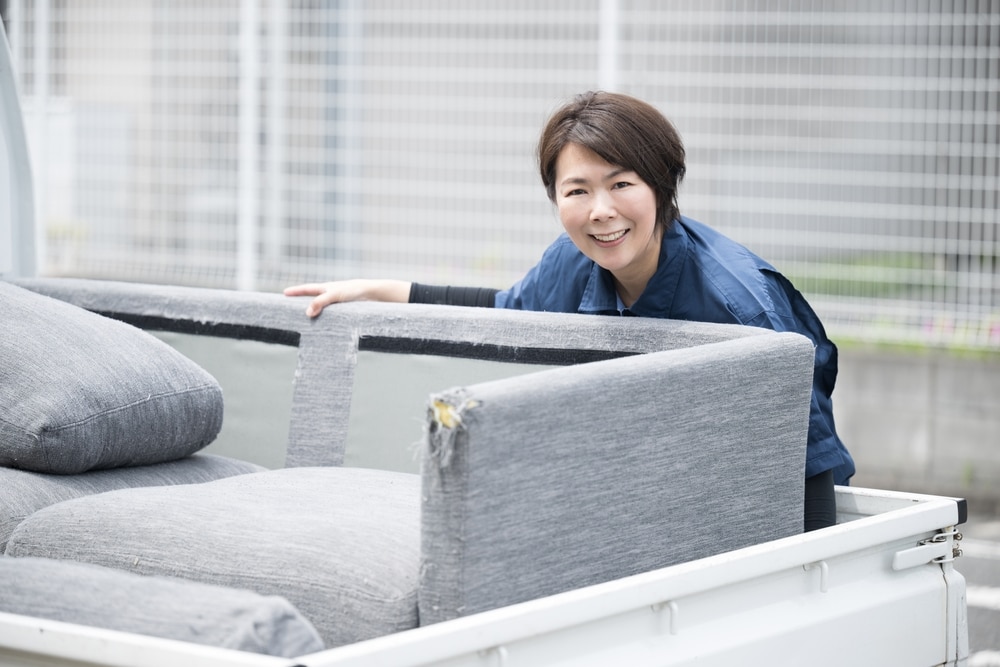
When you buy new items from specific furniture merchants, they will buy back your old furniture through their buyback schemes. These initiatives, a component of shops’ sustainability pledges, usually involve recycling, donating, or restoring used furniture.
Benefits
- Buyback schemes make switching outdated furniture for new ones more accessible.
- Participating in buyback programs guarantees that used furniture is disposed of properly rather than thrown away.
- Several programs offer rewards in exchange for used furniture, such as shop credit or savings on future purchases.
Tips:
- Understand the terms and conditions of buyback programs, including which items are eligible and how the process works.
- To fully benefit from buyback incentives, schedule the removal of old furniture with the purchase of new goods.
9. Arrange Furniture Swaps
One social and ecologically friendly approach to eliminating unwanted furniture is to plan a furniture swap with friends, family, or neighbors. By exchanging goods they no longer use or need, participants can give the furniture a new home without paying for it or producing waste.
Benefits
- Furniture exchanges encourage resource sharing among neighbors and strengthen ties within the community.
- Participants support sustainable consumption and trash reduction by swapping furniture.
- People can get new things by exchanging furniture without paying for brand-new purchases.
Tips
- Establish precise parameters and standards for the furniture swap, such as item quality and participation requirements.
- To encourage as many people as possible to participate in the furniture swap and post information on neighborhood bulletin boards, social media, or newsletters.
10. Check Local Regulations
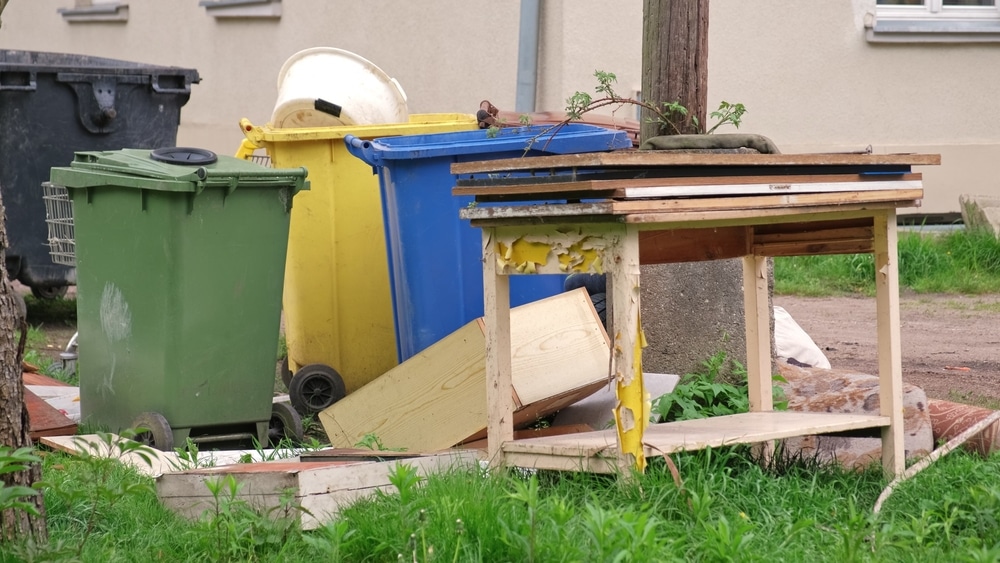
Learn about the local regulations and laws about recycling and waste disposal before you dispose of furniture. Adhere to the specific rules established by various municipalities regarding the disposal of furniture made of plastic or other materials to maintain both legal compliance and environmental responsibility.
Expert Tips To Dispose of Furniture
- Determine if the furniture is usable or needs recycling.
- Prioritize donation, recycling, or upcycling over landfill disposal.
- Clean and disassemble if possible to facilitate disposal.
- Donate usable furniture to charities or nonprofits to benefit others.
- Find recycling centers that accept furniture materials like metal, wood, or plastic.
- Repurpose furniture parts for DIY projects to extend their usefulness.
- Choose methods that minimize environmental impact and support sustainability efforts.
Conclusion
In conclusion, there are numerous effortless ways to dispose of furniture that are also eco-friendly. Whether you donate to charities, utilize junk removal services, participate in furniture recycling programs, or explore DIY options like upcycling, each method contributes positively to the environment and your community. Making conscious choices about furniture disposal can help reduce waste and promote a more sustainable future.
How can I dispose of old furniture?
Donate, sell, recycle, or contact a junk removal service to dispose of old furniture properly.
Can I recycle furniture?
Yes, many furniture pieces can be recycled. Check local recycling programs for specific guidelines.
Are there fees for disposing of furniture?
Yes, fees may apply for disposing of furniture, especially with junk removal services or landfill sites.
What is the best way to load furniture into a dumpster?
Disassemble large pieces, distribute weight evenly, place heavier items at the bottom, and fill gaps efficiently.
Who can I get to pick up old furniture?
You can contact donation centers, or junk removal services, or schedule a bulky item pickup with your local waste management.

